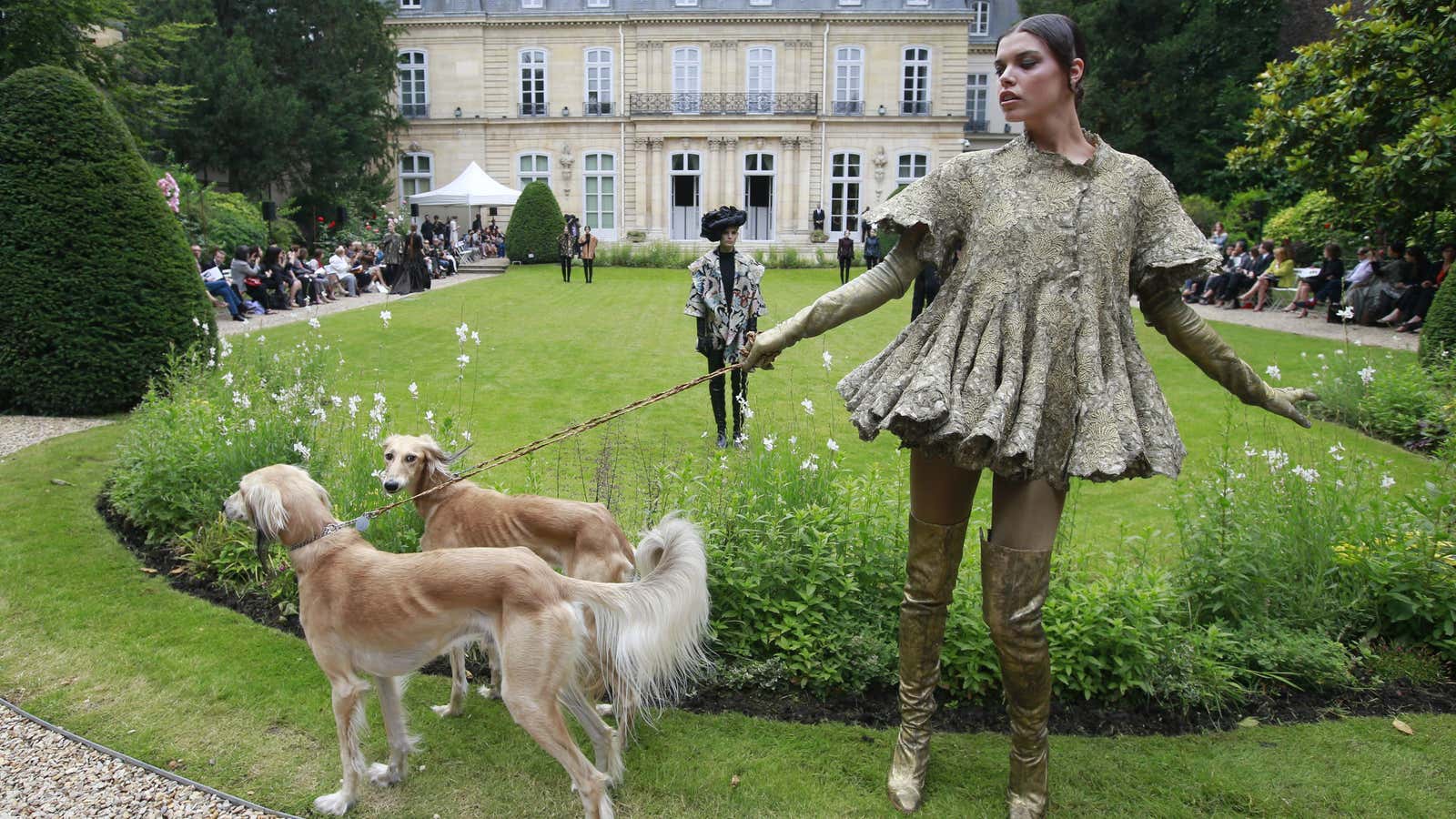Although it’s my job to unravel fashion’s many mysteries, one of the industry’s more glamorous secrets has proven largely inscrutable to me. When designers unveil their couture collections, where an outlandish, one-of-a-kind, handmade dress can cost anywhere from tens of thousands to several million dollars, I always wonder: Who actually buys this stuff? And where do they wear it?
Even as fashion rapidly democratizes, with social media and cheap fast fashion spreading every garment and trend everywhere, couture remains extremely exclusive and impenetrable, with designers discreetly protecting the identities of their highest-paying clients. The fashion houses that release earnings reports don’t tend to break out the small subset of their sales that come from couture. And these customers are not the types to tag their outfits on Instagram.
But a new story by The New Yorker’s Rebecca Mead lifts the heavily beaded veil, in a revelatory Bacchanalian romp through a July weekend of couture shows hosted by Domenico Dolce and Stefano Gabbana, better known as Dolce and Gabbana.
Because the collection is produced in Italy, it is labeled alta moda instead of haute couture, but the garments’ lavish construction and expense are just as extreme as their Parisian counterparts, and the party—this season set in the postcard-perfect Mediterranean bay of Portofino—is probably more fabulous for its Italian-ness.
In Mead’s story, which is well worth a leisurely weekend read, there is trofie with pesto, cheesy pop music, a shirtless mayor named Giorgio, and of course, Dolce and Gabbana’s designs, which smack of sexy Sicilian widows, Sophia Loren, and Madonnas of both the religious and the pop music variety. But because these dresses are alta moda, and not just plain old moda, they drip with hand-beaded, gilded, sequined, and fur-trimmed flourishes—again begging the question, who buys these?
Real people actually do, Dolce told The New Yorker. “These people—they work, they have a job,” he explained. “Maybe the client is the wife of some important man, who is not in the spotlight. It is not like the actresses you find in every place—these people are very private.”
Couture clients increasingly hail from China, Russia, and the Middle East, and they are getting younger according to Giorgio Armani and Camilla Schiavone, the managing director of Schiaparelli (not just thanks to great plastic surgeons). As one would expect, Mead’s account of the weekend is populated with the globe-trotting super-rich: Russian oligarchs cruising the Mediterranean in their mega-yachts and Parisian-born Italian heiresses. They are also real estate-developers from Beirut and Brooklyn, Chinese jewelry designers, English steel magnates, Japanese selfie-enthusiasts, and many, many more. As a Libyan client reminded Dolce, had the designers not scheduled the festivities during Ramadan, there would likely have been more guests from the Middle East.
As for where they wear these clothes, Helen Wilson, a British client who had driven with her husband from their house in the south of France, explained that it’s places and events exactly like this. “[A couture gathering] is a great time to showcase what you’ve bought, and also to see what everyone else has bought,” she said.
It sounds a little like wearing a band’s tee shirt to their concert, but I suppose that’s appropriate: These are the world’s richest superfans. And so long as Dolce and Gabbana can afford to provide such outrageous occasions, their clients will have a place to parade in their couture.
